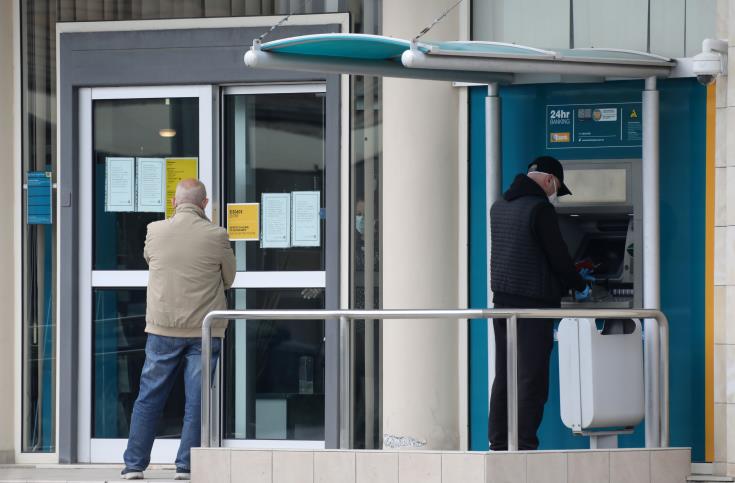By Yiannis Tirkides
No one negates the risks. There are grave concerns, by many, that the amassing of debt by the private and the public sectors alike, as a consequence of the policy responses to the coronavirus outbreak, will create challenging conditions in the aftermath, and that these conditions will trouble the world economy for years to come. We share these concerns.
Monetary and fiscal policy measures are unprecedented and will have implications long after the pandemic is over.
But the nature of the crisis the entire world is facing is in many ways unique, and the options for dealing with it, likewise limited.
Failure to act quickly and resolutely carries greater risk.
This is the threat of the permanent destruction of productive capacity globally and nationally. Such an outcome would be creating conditions akin to an economic depression, not just a recession.
The monetary and fiscal response, therefore, must be massive, and the amassing of public and private debt is the necessary consequence.
Income support, monetary accommodation and fiscal expansion including loan guarantees to the banking sector, are necessary all in good measure.
We need to understand that what is at stake, is not just a financial upheaval.
What is really at stake is the physical destruction of the economy. We usually think in financial terms because we take the physical economy for granted.
Finance is about the efficient allocation of scarce capital resources.
The physical economy is about everything else: production, consumption, movement and transport.
The lack of operating capital that destroys otherwise viable companies and other productive units destroys the physical economy and creates a depression. This is when industrial plants are misaligned and when trading systems are ruptured.
The current crisis is larger and more unpredictable in terms of its fallout and lasting effects, than the financial crisis of 2008-09.
The latter involved primarily liquidity and solvency-related measures. In contrast, the current crisis as already said relates to the amount of operating capital in the economy.
Larger firms may have enough capital to wait out the crisis. But small and medium-sized companies particularly in the most affected sectors like travel, tourism and trade, operate on very tight margins and would not be able to meet their current expenses including paying wages to their employees if the closures last long enough, and certainly more than one quarter.
The amassing of private debt is unavoidable because the macroeconomic conditions prevailing cannot provide alternative finance like equity capital.
The economic dislocation in 2020 will be large and the drop, in growth, will be deep.
The IMF’s half-yearly economic forecast released in mid-April anticipates that the global economy will contract by 3% in the year.
This contrasts with its February update that was anticipating a 3% growth instead.
The outlook about the pandemic had changed since.
The template for understanding the new coronavirus shifted from the SARS experience of 2003 to perhaps the Hong Kong flu epidemic of the 1960s with a much larger contagion.
The IMF now forecasts a contraction of 6.1% in the US and 7.5% in the Euro Area.
Real GDP is expected to contract by 9.1% in Italy, by 8% in Spain and by 10% in Greece.
In Germany output will drop by 7% and by 7.2% in France. In Cyprus, real GDP will drop by 6.5% according to the IMF.
Moreover, these forecasts assume that the virus will be contained in the first half of the year and that it will not recur in the second half or by next winter.
A sharp recovery in the global economy of 5.8% in 2021 is still possible only if the pandemic does not recur.
First-quarter numbers are only now starting to come in. Real GDP in France dropped by more than 5% and so did in Italy with less than a month of lockdown.
The second quarter is certain to be significantly worse.
No V recovery
The recovery may not be the strong V-shape that many initially anticipated.
The recovery will be slow and baring a medical solution to the pandemic, economies will take time to return to their pre-virus sizes.
If a significant part of the workforce is withdrawn from the economy the supply disruption can be significant.
And with it, every part of aggregate demand – consumption, investment and exports – will drop sharply.
Governments are deploying massive fiscal stimulus of 5% to 10% of their GDPs excluding liquidity and guarantees.
Only central governments have balance sheets that are large enough to prevent the collapse of the private sector.
Governments should be prepared to deploy more fiscal stimulus if it will be needed to contain the pandemic.
Broadly speaking, measures taken by governments around the world including Cyprus fall under four categories: supporting short time work; tax forbearance; liquidity and guarantees; and household income support.
In Cyprus, the initial conditions in this crisis are very different than the initial conditions we had of the last crisis of 2012-14.
The macroeconomic environment is more stable; the institutional environment is more solid; The business sector is more competitive, and banking is much smaller, more efficient and better capitalised.
More importantly, we operate in a supportive Eurosystem, where now, unlike then, the problems and the challenges are more common.
The economy is relatively rich but small, and its structure is narrow with high dependence on the export of services, particularly tourism that will be hit particularly hard in this crisis.
The economy thus is excessively vulnerable to external shocks, like the pandemic crisis.
In the public sector, total consolidated public debt is high which limits the economy’s fiscal capacity.
For now, the public debt remains sustainable because the underlying dynamics are favourable if the economy grows over time, the primary surplus is substantial and the cost of debt service relatively low.
The economy will contract steeply in 2020 as tourism grinds to a halt and the government will run substantial deficits in 2020 and in 2021 and will delay substantial consolidation measures until later.
This will add to the stock of public debt which might rise to about 110% of GDP in 2020.
Public debt will once again return to a declining path once this crisis is over and growth returns.
The writer is Economic Research Manager at Bank of Cyprus the views expressed are his own










